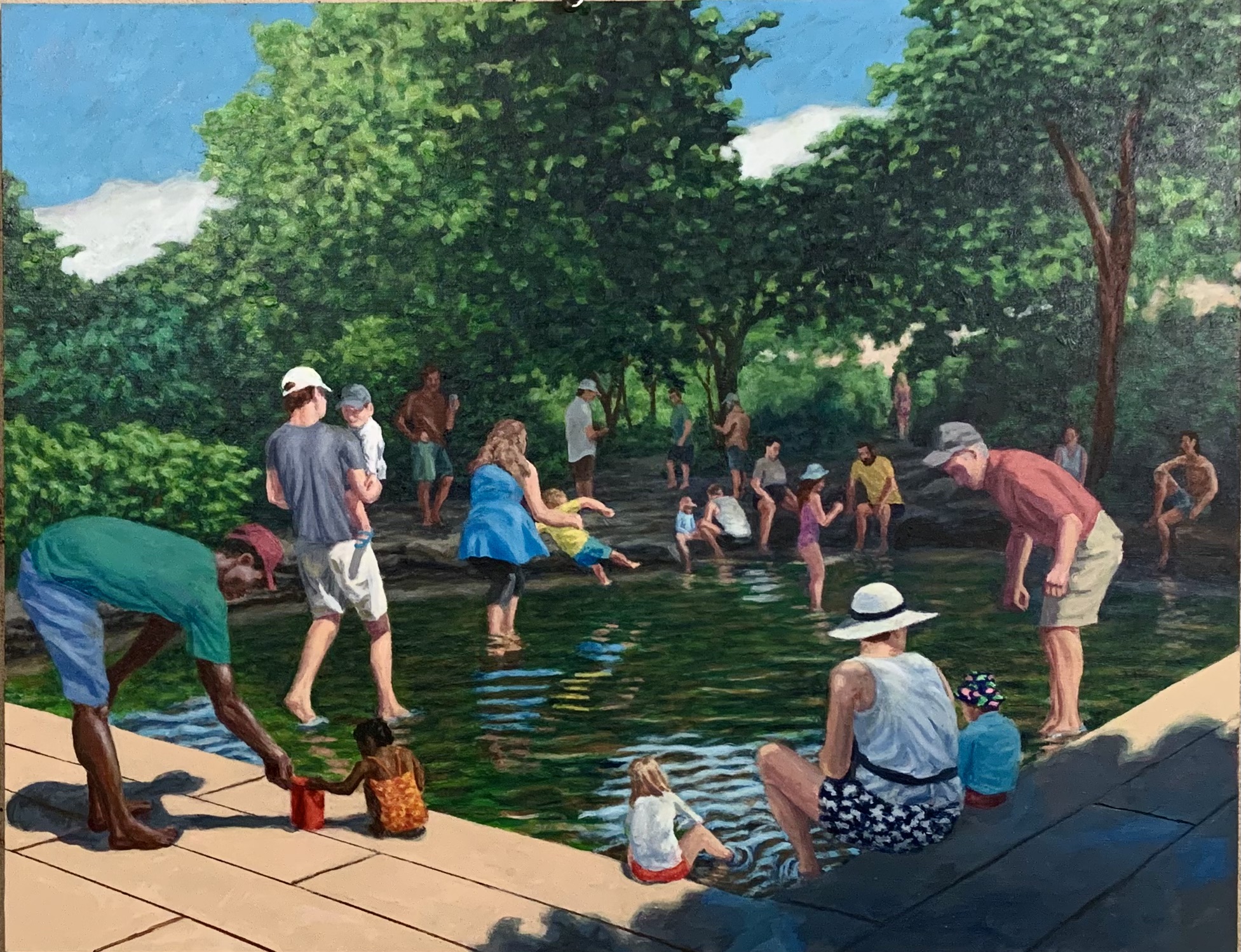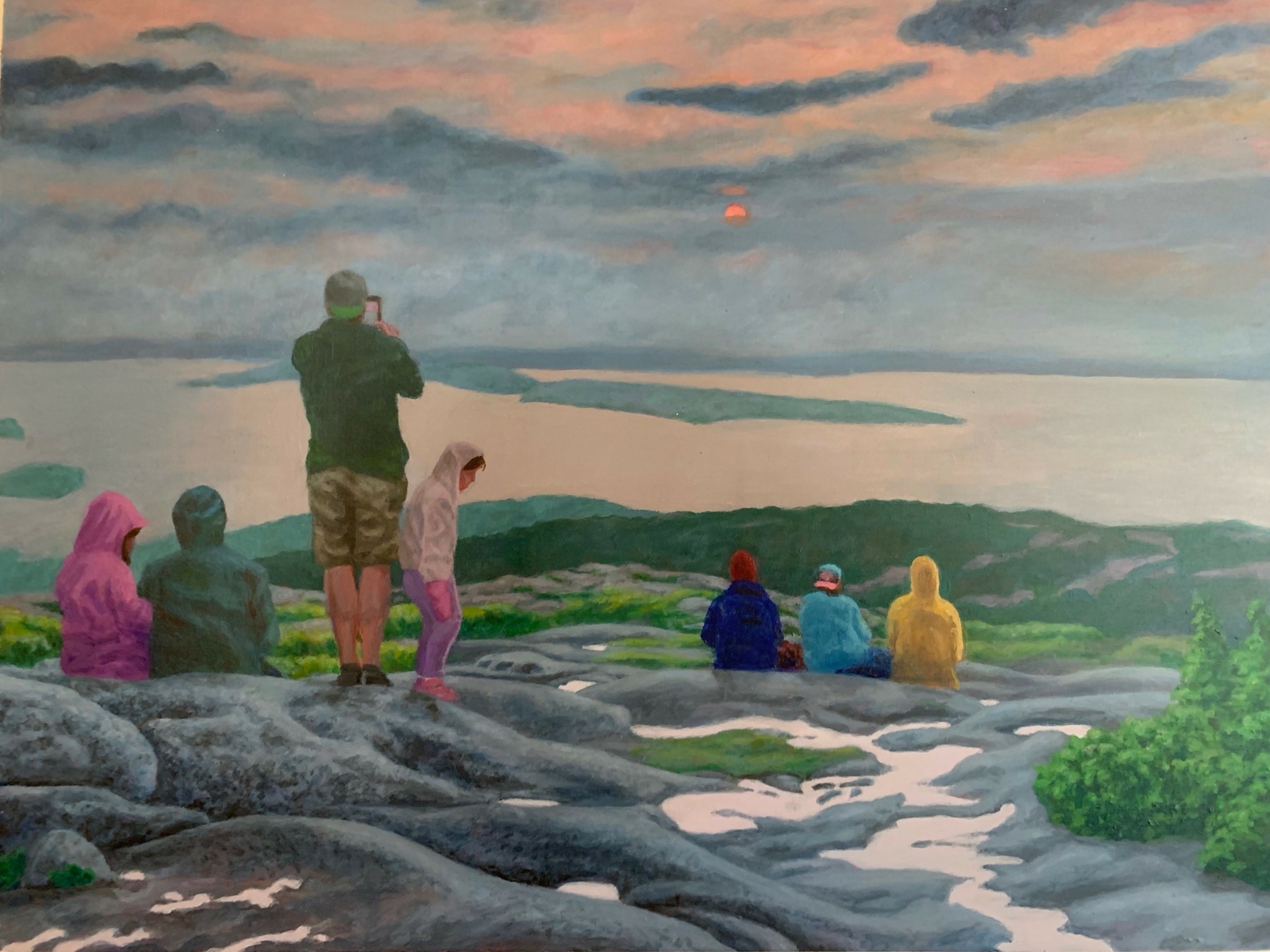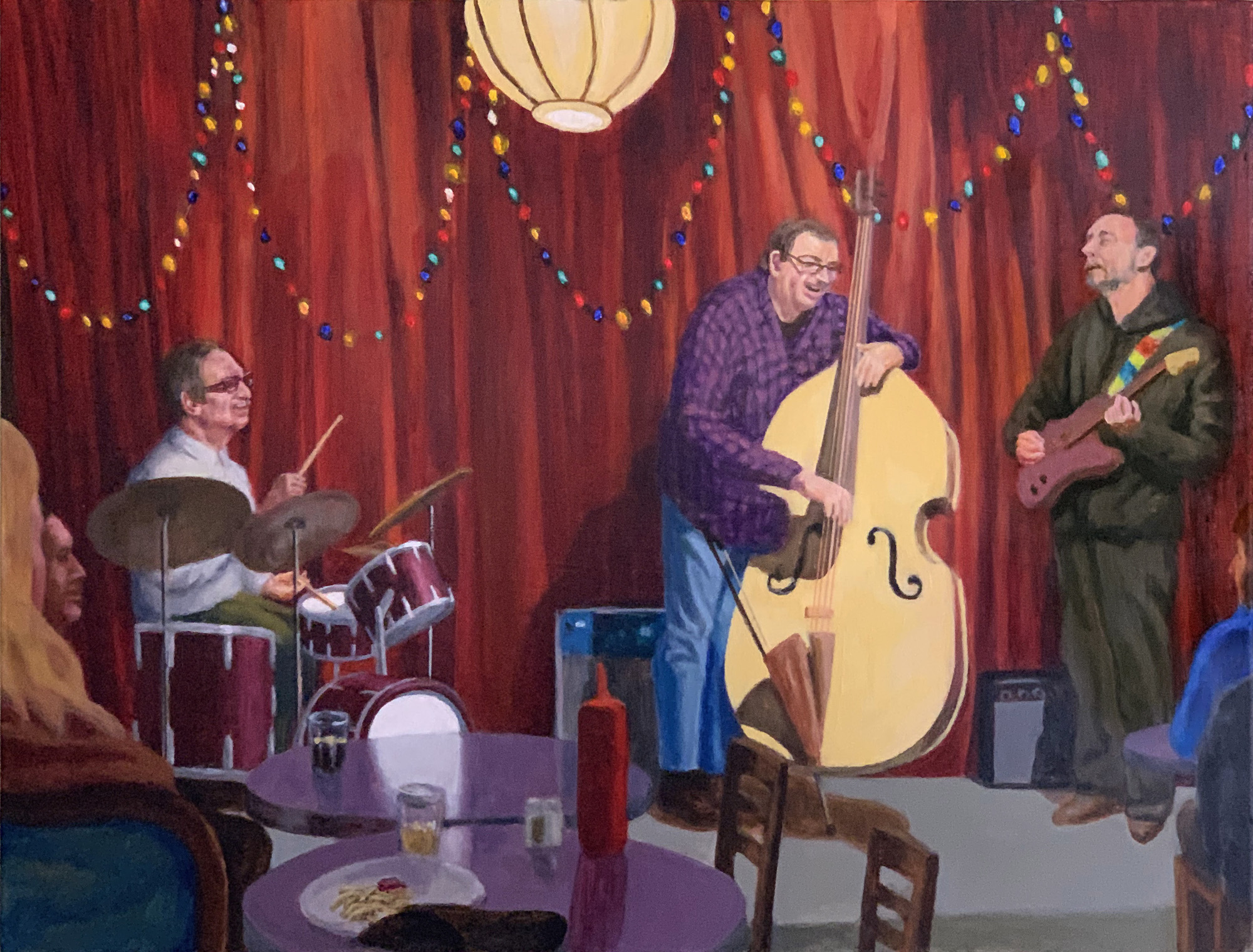We’re excited to introduce you to the always interesting and insightful David Amdur. We hope you’ll enjoy our conversation with David below.
David, thanks for joining us, excited to have you contributing your stories and insights. Learning the craft is often a unique journey from every creative – we’d love to hear about your journey and if knowing what you know now, you would have done anything differently to speed up the learning process.
How did you learn to do what you do? Knowing what you know now, what could you have done to speed up your learning process? What skills do you think were most essential? What obstacles stood in the way of learning more?
I didn’t have any ‘natural talent’ for drawing. I put that in quotes because I don’t really believe really believe in it. I think so called ‘natural talent’ is the result of untold hours spent throughout childhood and adolescence drawing for the fun of it. But, like most people, I mostly stopped drawing at about age eleven years, because there is little reward for it in or out of school, until one develops a special talent.
But, I was always drawn to the arts as ways to discover deeper understanding of the world and what it means to be human. As a teenager, I made light sculptures, produced light shows and experimented with performance art. But I didn’t draw because I thought it was only for those special few. In college, I took courses in literature and philosophy, but decided to try an art class because I thought it offered more direct experience.
My profs were abstract painters. They stressed—to put it as simply as I can here—how contrasts and harmonies of colors and shapes can develop visual drama. This idea is called ‘Formalism.’ For about a year I experimented with abstract painting & drawing. Formalism is still central to my art, even thought I’m now a realistic painter.
In a later class, my prof Vic Caglioti, challenged me to try drawing and painting from life. The results were incredibly clumsy, but people responded to the energy I put into it. Soon I was carrying a sketchbook everywhere and drawing at every opportunity. I’d say the most important things for learning art is to take joy in doing it, and do a lot of it without worrying about the results.
In my twenties, I did carpentry and house painting to save up to take a couple of long trips; first out West and then to Europe and Morocco. The gorgeous sights that I saw fostered desire to accurately represent what I saw, and I made real progress.
These trips, and many others since, gave me opportunities to view great paintings in museums. I believe that’s the second most important ingredient of an art education. It was also very important for me to study art reproductions in books and magazines. Nowadays, it’s so easy to see art online. Viewing great art and learning about its history is crucial for developing a sensibility, for getting ideas and learning ways things can be done. After all, we don’t have time to reinvent everything from scratch in one brief lifetime. To paraphrase Isaac Newton: We reach heights by standing on the shoulders of the giants that preceded us.
In the early ‘80s, I was painting in the south of Mexico, when I heard reports of the atrocities that were happening just to the south in Guatemala and El Salvador. In response, I decided to make paintings about them. But, soon I felt the need for more education in how to tell a compelling story with paint.
It was hard to find a graduate program where I could learn more of the nuts and bolts of painting people in action. Art is a very diverse field and different schools have different focuses. And frankly, some have better and more committed faculty than others. I looked carefully at seven programs that had faculty who’s work interested me. I visited four schools in person, talking with faculty and students, before deciding on Queens College of the City University of New York. The painters I studied with there, including Rosemarie Beck, Gabriel Laderman, and Robert Birmelin, had the courage to row against the predominant tide of abstraction at mid-century to create truly original figure painting, informed by tradition but not academic.
After completing my MFA, I still felt my ability to draw people was still weak, so I secured an Andy Warhol scholarship for an additional year of study at The New York Academy of Art, which had a very rigorous program for figure drawing.
I do less painting now of topical subjects, and instead mostly focus on the poetry of how people interact with each other and in nature.
I’m very happy with my abilities now, now but it would have been really great if I had a foundation of drawing in my younger years. Drawing is more rigorously taught in European schools, which explains why they excel in design.
Also, it would have been better if I found my path earlier. I was 31 when I started Grad school. Then, we had our daughter before I finished, and I had to get to work ASAP—it would have been good to have more time to develop my art career at that juncture. Still, I wouldn’t trade my daughter for the world.

David, love having you share your insights with us. Before we ask you more questions, maybe you can take a moment to introduce yourself to our readers who might have missed our earlier conversations?
Most of my paintings are centered on human interaction, which I’ve explored in series depicting people engaging with nature, at festivals, in social and political actions, at play, and making music. They aren’t overly flamboyant, clamoring for a moment of attention. I try to make paintings that you can live with— that reward repeated viewing.
They are realistic, but while I feel keen responsibility about how I represent my subjects, that’s not enough in itself. A good painting is a lot like a musical composition. It builds dramatic force through contrasts and harmonies. But instead of tones and rhythms, a painting’s elements are colors, shapes and space. I often think a piece of music leads me on a journey— paintings do that too. A painting can be configured so that when you’re looking at a particular part, another part struggles for attention. And then, something else tugs at your eyes, then another, and so on. This creates energy in the experience of looking. In addition, clear presence of color is very important to me. Color should impress itself upon the eyes with the same kind of immediacy as scent which fills the nose.

For you, what’s the most rewarding aspect of being a creative?
I find color, form and the feeling of movement in paintings to be very sensual and engaging. I also enjoy how a people and things take shape in my paintings, beginning as a few blobs of color, then developing to an independent presence. Also, how when a painting finally arrives, it seems like it came from somewhere beyond me.

What do you think is the goal or mission that drives your creative journey?
The main thing for me, is to keep challenging myself creatively with new subjects that share a lineage with what I have done before. However, while I have never liked taking out time to promote myself, in the last few years I have done more to do so, and arrange for exhibitions.
Contact Info:
- Website: https://bit.ly/amdur-art
- Instagram: davidamdur3

Image Credits
All photos are ©David Amdur


